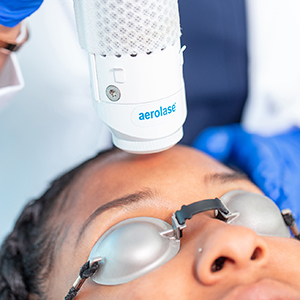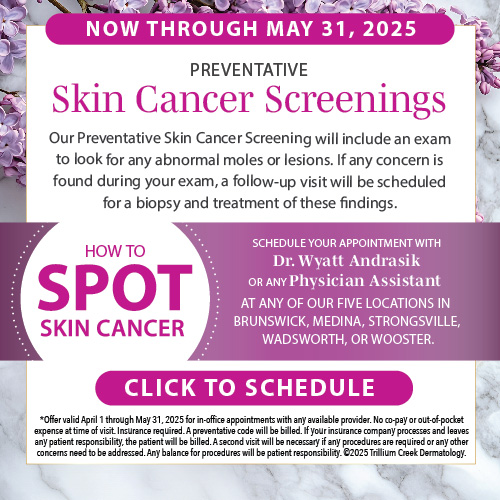Quick Links
Aerolase® Overview

The Aerolase LightPod Neo® is a uniquely gentle and versatile laser device, which is safely and effectively used for a broad range of common aesthetic skin treatments:
- Acne
- Melasma
- Nail Fungus
- Pigmented Spot Removal
- Rosacea
- Scar Revision (Scars/Stretch Marks/Keloids)
- Skin Rejuvenation & Tightening
- Veins & Vessels
- Warts
- Wound Healing
How does the LightPod Neo work?
The Neo’s 1064 laser light is attracted to a combination of melanin, hemoglobin, and water within the skin tissue. The laser energy passes through the epidermis and selectively targets specific tissue structures without affecting the surrounding skin. These factors are what make the laser so versatile, efficient, safe, and gentle.
Why Laser Therapy?
- Safe & Gentle – Aerolase laser technology is FDA cleared for acne treatment and has a proven safety record without the common side effects of other therapies such as itchy, dry or sensitive skin.
- Quick Results – Many patients see results immediately after one treatment and further improvement with subsequent treatments. Other therapies can take up to 90 days to show improvement.
- No Harmful Drugs – You avoid the negative side effects associated with many popular, systematic drug therapies.
- No Downtime – You can immediately return to normal activities after treatment.
Treatment With Aerolase®
Acne
Acne is caused when pores become clogged and then infected with the p. acnes bacteria. The laser light heats the affected area to effectively kill the acne’s bacteria while also helping to shrink the sebaceous glands, which will cause them to produce less oil, limit future outbreaks and reduce pore size. This can vary depending on the skin and severity of the condition, but generally, 4 to 6 sessions are required to achieve a good result. After that, the patient may need maintenance every few months depending on their skin type.
Melasma
This can vary depending on the size density of melanin and depth of the affected area. Typically melasma will lighten or disappear completely after 1-2 treatments although in some cases more treatments may be necessary. It is important to understand that melasma, like eczema and psoriasis, is a chronic condition that can be controlled rather than cured.
Nail Fungus
Typically 3 treatment sessions are recommended spaced out 3-4 weeks to gauge the success of each subsequent treatment and to physically view the clear nail growth. Follow-up treatments may be needed to prevent or treat reinfection.
Pigmented Spot Removal
Some patients will respond better than others and the number of treatments for each lesion may depend on the darkness and size of the lesion as well as the amount of laser energy used. After treatment, the lesion should continue to darken and eventually slough off in 3-4 weeks. Some differences in pigmentation between the treated spot and surrounding tissue may persist after the lesion is fully or mostly removed. This can vary depending on the size and color of the pigmented spot. Typically sun and age
spots will disappear completely after 1-2 treatments although in some cases more treatments may be necessary.
Your Team of Experts
Rosacea & Redness
Rosacea lesions tend to subside after the first or subsequent treatments. Regardless of the treatment response, recurrence is common and can be caused by a number of lifestyle factors. It is important to understand that rosacea is a chronic condition that can only be controlled rather than cured. Individual results will vary but can depend on the body surface that is affected. While some patients may see relief in just one treatment, other patients may need a number of treatments to achieve their desired result.
Scar Revision
Typically, newer scars respond better than older ones due to the increased amount of vascularity or melanin present within the scar. While collagen will be remodeled to help with skin texture, it is important to let the patient know that laser therapy will diminish any melanin or vasculature within the scar, but will not remove the scar as an ablative laser, such as the LightPod Era, is needed to diminish scar tissue. Typically, the more pigment or vasculature the scar contains the more treatment sessions may be needed. While there may be a noticeable improvement after just one treatment, multiple treatment sessions may be needed to sufficiently eradicate the color.
Skin Rejuvenation
The best candidates for skin rejuvenation are patients with skin types I-IV aged 30-55 showing the initial signs of aging such as fine lines, minor wrinkles, sun damage, and vessels as well as signs of reduced skin laxity. Patients should begin to see results immediately after the treatment and the results will continue to become better over time. After the complete set of treatments (typically once a month for 6 months) patients can expect to see the results continue for the next six months, after which they can start the treatments again. This can vary depending on the skin and severity of the condition, but generally, 6 sessions are required to achieve a good result. After that, the patient may need maintenance every few months depending on their skin type.
Veins & Vessels
Vessels treated on the legs have a higher tendency to resurface, as the blood pressure tends to be higher. After treatment, rust-colored staining of adjacent skin tissue, called hemosiderin, may appear from the breakdown of hemoglobin and will subside over the course of 3-4 weeks. Typically angiomas and spider veins will disappear completely after 1-2 treatments although in some cases more treatments may be necessary.
Warts
Some patients will respond better than others and the number of treatments for each vessel may depend on the depth and size of the wart. This can vary depending on the depth and size of the wart. Typically warts disappear completely after 1-2 treatments although in some cases more treatments may be necessary.
Wound Healing
Wound healing is a slower process that can take a number of treatments to visibly see results and closure, which will also depend on the severity, depth, and size of the wound as well as the patient’s immune system’s ability to heal. Each person’s healing process, known as the healing cascade, is different, and therefore the time between treating inflammation, tissue regeneration, and tissue remodeling can be very different between patients, but laser therapy can help speed these processes. Typically, the more chronic or severe the condition, the longer the body takes to respond. The majority of conditions treated will take anywhere from a single treatment to multiple treatments.



